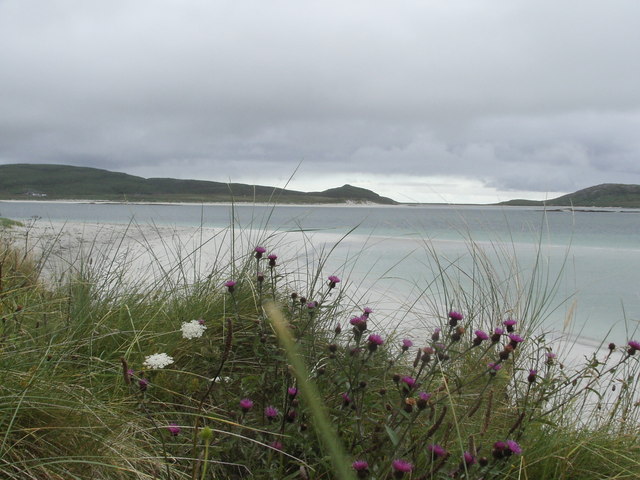Fuday on:
[Wikipedia]
[Google]
[Amazon]
 Fuday (
Fuday (
 Fuday (
Fuday (Scottish Gaelic
Scottish Gaelic (, ; Endonym and exonym, endonym: ), also known as Scots Gaelic or simply Gaelic, is a Celtic language native to the Gaels of Scotland. As a member of the Goidelic language, Goidelic branch of Celtic, Scottish Gaelic, alongs ...
: Fùideigh) is an uninhabited island of about and is one of ten islands in the Sound of Barra, a Site of Community Importance
A Site of Community Importance (SCI) is defined in the European Commission Habitats Directive (92/43/EEC) as a site which, in the biogeographical region or regions to which it belongs, contributes significantly to the maintenance or restoration at ...
for conservation in the Outer Hebrides
The Outer Hebrides ( ) or Western Isles ( , or ), sometimes known as the Long Isle or Long Island (), is an Archipelago, island chain off the west coast of mainland Scotland.
It is the longest archipelago in the British Isles. The islan ...
of Scotland
Scotland is a Countries of the United Kingdom, country that is part of the United Kingdom. It contains nearly one-third of the United Kingdom's land area, consisting of the northern part of the island of Great Britain and more than 790 adjac ...
.
It lies just east of Scurrival Point on Barra
Barra (; or ; ) is an island in the Outer Hebrides, Scotland, and the second southernmost inhabited island there, after the adjacent island of Vatersay to which it is connected by the Vatersay Causeway.
In 2011, the population was 1,174. ...
and west of Eriskay
Eriskay (), from the Old Norse for "Eric's Isle", is an island and community council area of the Outer Hebrides in northern Scotland with a population of 143, as of the United Kingdom Census 2011, 2011 census. It lies between South Uist and Bar ...
. Fuday is owned by the Scottish Government
The Scottish Government (, ) is the executive arm of the devolved government of Scotland. It was formed in 1999 as the Scottish Executive following the 1997 referendum on Scottish devolution, and is headquartered at St Andrew's House in ...
. Deserted since 1901, its peak population is recorded only as seven.
It is still used for the summer grazing of cattle, and they used to be swum across the , but shallow, Caolas Fuideach (strait) to there from Eoligarry. When cattle were first introduced to the island, they were killed by dehydration. The crofters who left the cattle on the island failed to show the animals the location of the only drinkable source of water on the island, a loch far inland on the island. The cattle thus could not find drinking water and died of thirst.
Notes and references
Islands of the Sound of Barra Uninhabited islands of the Outer Hebrides {{WesternIsles-geo-stub